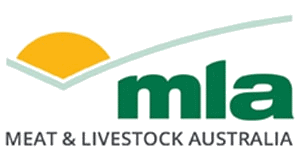Development of a commercial vaccine for Haemonchus contortus, the Barber’s Pole Worm
Did you know a vaccine has been developed for barber's pole worm that is effective in lambs, yearlings and ewes?
| Project start date: | 14 June 2013 |
| Project end date: | 29 January 2015 |
| Publication date: | 08 April 2022 |
| Project status: | Completed |
| Livestock species: | Sheep, Lamb |
| Relevant regions: | National, NSW |
|
Download Report
(3.3 MB)
|
|
Summary
Barber’s pole worm, Haemonchus contortus is an important gastrointestinal parasite of sheep and goats in Australia particularly in North Eastern NSW and Southern Queensland. Haemonchus is usually controlled by amthelmintic drugs, but resistance is common therefore, alternative control measures are required.
Barbervax is a vaccine for H.contortus has been approved for sale in Australian lambs. This project aimed to determine whether it is effective in ewes in terms of suppressing increased susceptibility to infection around lambing and during lactation and also during the high risk period in late summer. This project was the third part of a three stage objective where the overall aim is to make an effective Barber’s Pole worm vaccine commercially available for Australian sheep producers.
The first part (Project B.AHE.0068) of the overall objective determined vaccine efficacy and safety for lambs in field trials, culminating in the successful registration of Barbervax for use in lambs. The second part (Project B.AHE.0214) of the overall objective showed that the vaccine afforded lambs an epidemiological benefit by reducing pasture contamination with infective worm larvae. In addition, it showed that the vaccine was effective in yearling sheep.
This results from this project together with earlier results from trials with yearling sheep has been compiled and submitted to the APVMA in order that authority for using Barbervax across entire flocks can be obtained.
Objectives
This project was mainly concerned with determining whether the vaccine could confer protection on ewes, both in terms of suppressing their increased susceptibility to infection around lambing and during lactation, and also during the high-risk period in late summer. A secondary objective was to determine whether Barbervax could be useful for producers in the Northern Slopes of NSW. Graziers in this region would be reluctant to adopt the 5-vaccination schedule recommended because the effort and expense of mustering on their more extensively grazed properties would be prohibitive. Lastly, the third objective was to compile the findings from this and the previous (B.AHE.0214) into a dossier for submission to the APVMA.
Key findings
The efficacy trial with extensively raised lambs near Narrabri was encouraging from a serological perspective, but inconclusive thanks to the lack of worm challenge. Fortunately however, there was sufficient rain in the New England district to provide an adequate challenge to test Babervax efficacy in the three trials with ewes. These trials showed that a course of Barbervax significantly reduced ewe egg counts both before and after weaning, but the effect was stronger and more reliable if the animals had been immunised in a previous season. The efficacy observed would probably have been increased if the vaccinates had grazed separately from the unvaccinated control ewes, as users of the vaccine would be strongly advised to do.
Benefits to industry
Barber’s pole worm is one of the major gastrointestinal parasites in Australia, causing production and economic losses as well as animal welfare concerns. Resistance to existing control measures is an issue which a vaccine will also address.
MLA action
The results have been favourable and a second dossier containing the data from B.AHE.0232 and B.AHE.0214 was submitted to the APVMA in December 2014. Therefore, if approval of the second dossier is obtained, farmers will be able to use the vaccine in lambs, yearlings and ewes. By this means it is hoped that Australian farmers will have a new tool to combat Barber’s Pole worm across their entire flock.


